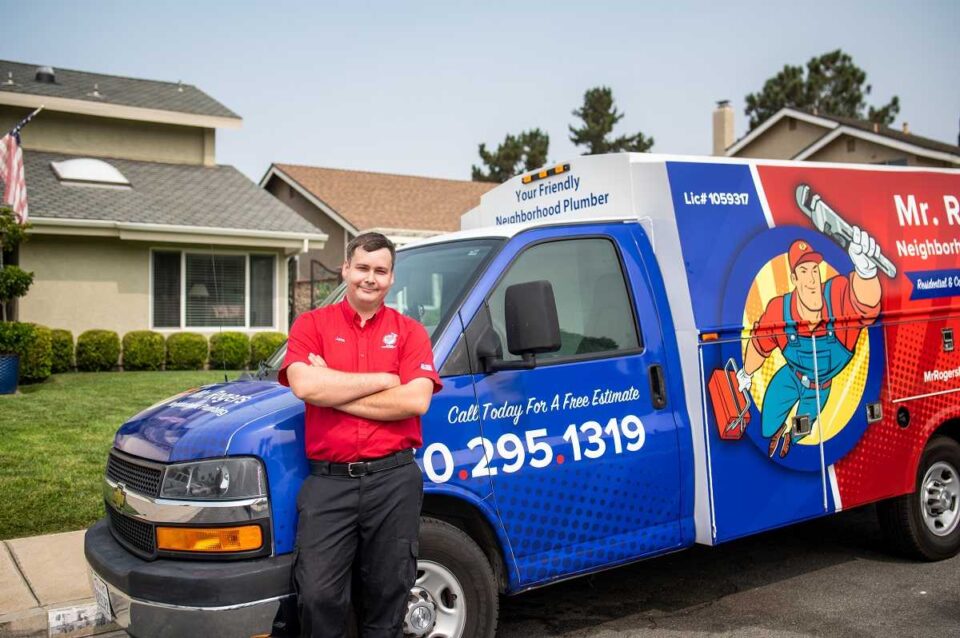Initial Assessment and Safety Protocols
Safety First
Upon arriving at a site suspected of a gas leak, professional plumbers prioritize safety above all else. The first step involves immediate actions to secure the area:
- Ventilating the Area:Professionals ensure that all windows and doors are opened to allow natural air flow, which helps in reducing gas concentration inside the premises.
- Shutting Off Gas Supply:One of the most critical steps is to locate and shut off the main gas valve to prevent further gas escape. This action significantly mitigates the risk of gas accumulation and potential ignition.
Initial Assessment
Here’s how it’s done:
- Use of Gas Detection Tools:Professionals utilize advanced gas detection tools such as handheld gas detectors, combustible gas indicators, and electronic gas analyzers. These devices help in pinpointing the exact location of the leak and assessing the gas levels present in the environment.
- Visual Inspection:Alongside technological tools, a visual inspection plays a crucial role. This includes checking gas appliances, connections, and the general condition of gas pipes. Signs of wear, corrosion, or damage on pipes can often indicate likely points of leakage.
Tools for Detecting Gas Leaks
Electronic gas detectors are at the forefront of leak detection technology used by plumbing professionals. Here are some insights into the types and advantages of these devices:
- Types of Electronic Gas Detectors:There are several types of electronic gas detectors, including semiconductor sensors, electrochemical gas sensors, and catalytic sensors. Each type is designed to detect different gases and concentrations, making them versatile tools in a plumber’s arsenal.
- Advantages of Using Electronic Detectors:The primary advantage of electronic gas detectors is their ability to provide precise and immediate readings. This allows plumbers to quickly identify the exact location of the leak and the type of gas involved, ensuring timely and accurate repairs.
Infrared Imaging Tools
Infrared imaging represents a non-invasive method of detecting gas leaks by visualizing the thermal signatures associated with escaping gases.
- How Infrared Imaging Works:Infrared cameras detect differences in temperature and can visualize gases that are usually invisible to the eye by capturing the infrared radiation emitted or absorbed by gases.
- Scenarios Where Infrared Tools are Particularly Effective:These tools are incredibly effective in scenarios where leaks are suspected in hard-to-reach areas or within enclosed spaces. They can detect even small discrepancies in heat signatures without disturbing the infrastructure, making them ideal for complex residential or commercial environments.
Ultrasonic Detectors
Ultrasonic detectors use sound technology to identify the high-frequency noise created by gas as it escapes from pipes or fittings.
- Use of Ultrasonic Detectors:These devices are highly sensitive to the sound waves produced by the pressurized gas escaping into the atmosphere. Professionals use them to listen for the characteristic hissing or whistling sounds of gas leaks, which might otherwise be undetectable.
- Benefits of Using Ultrasonic Technology:Ultrasonic detectors are particularly beneficial in noisy environments where other detectors’ effectiveness might be compromised. They can differentiate between background noises and the specific sounds of escaping gas, making them invaluable for industrial applications or areas with a lot of ambient noise.
Techniques for Locating and Confirming Gas Leaks
Soap Solution Tests
One of the oldest yet most effective methods for detecting gas leaks is the soap solution test. Despite the advent of high-tech equipment, this method remains a staple due to its simplicity and effectiveness.
- Methodology:
- Preparation:A solution of soap and water is prepared. The soap increases the viscosity of the water, allowing it to cling to surfaces without dripping.
- Application:The solution is applied liberally to areas suspected of having a leak, such as joints, valves, and pipe surfaces.
- Observation:The area is observed for bubbles. Escaping gas will cause the soap solution to bubble up, visually confirming the presence of a leak.
- Usage by Professionals:
- Immediate Confirmation:After narrowing down potential leak sites with more sophisticated detectors, plumbers often use this method to visually confirm a leak’s presence.
- Safety Checks:Post-repair, the soap solution test is frequently employed to ensure that all repairs have sealed leaks effectively, providing an immediate visual cue if any leakage still occurs.
Pressure Tests
Pressure tests are critical for assessing the overall integrity of a gas system. These tests are not only used for locating leaks but also for verifying the condition of the system after repairs or installations.
- Conducting Pressure Tests:
- Setup:A pressure gauge is attached to the gas system at an access point, and the system is sealed off.
- Pressurization:The system is then filled with a specific pressure of air or an inert gas, significantly lower than the system’s maximum operating pressure to ensure safety.
- Monitoring:The pressure is monitored over a designated period. A drop in pressure indicates a leak, as the gas escapes the system.
- Interpretation:
- Stable Pressure:If the pressure remains stable, the system is considered intact and leak-free.
- Pressure Drop:Any drop in pressure is analyzed to determine the severity and approximate location of the leak, guiding further detailed inspections.
Repair Methods
When it comes to gas leak repair in Oceanside, CA, professional plumbers employ a variety of techniques to ensure safety and efficiency. These methods range from direct repairs to full pipe replacements and the use of advanced sealing technologies.
Direct Repair Techniques
Direct repair techniques are typically employed when the source of the leak is clearly identified and isolated. These techniques are designed to fix the leak without extensive modifications to the existing gas system.
- Specific Techniques:
- Tightening Fittings:Many leaks occur at joints where fittings have loosened over time. Using wrenches and appropriate torque, plumbers tighten these fittings to stop leaks.
- Replacing Faulty Sections:If a section of pipe is damaged or corroded, it is cut out and replaced with a new pipe. This requires precise measurement and cutting to ensure a seamless fit.
- Materials and Tools:
- Materials:Common materials used in direct repairs include metal clamps, rubber sheets, or sealants designed for high-pressure systems.
- Tools:Wrenches, pipe cutters, and threading tools are essential for making accurate and effective repairs.
Pipe Replacement
In some cases, repairing a specific leak might not be sufficient if the overall integrity of the gas line is compromised. This calls for partial or complete pipe replacement.
- When and Why Replacement Is Necessary:
- Aging Infrastructure:Over time, pipes can corrode or degrade, increasing the likelihood of multiple leaks.
- Safety Concerns:Modern safety standards may require upgrading older pipes to newer materials that are safer and more durable.
- Process and Materials:
- Process:The affected section of the pipeline is isolated and shut off. Old pipes are carefully removed and replaced with new ones that meet current standards.
- Materials:Professionals often use high-density polyethylene (HDPE) or coated steel pipes for gas lines due to their durability and resistance to corrosion.
Advanced Sealing Solutions
Advances in technology have introduced new materials and methods for sealing gas leaks more effectively and durably.
- Introduction to New Technologies:
- Epoxy Resins:These are mixed on-site and applied over the leak area. They harden to form a strong, gas-tight seal.
- Specialized Tapes:Certain tapes are designed to bond with the pipe material upon application, providing a quick and effective seal.
- Application and Effectiveness:
- Application:These materials are applied directly to the cleaned and prepared surface of the leak. The application must be precise to ensure that the entire leak is covered.
- Effectiveness:When applied correctly, these solutions create a permanent seal that withstands the operational pressures and environmental conditions typical of gas pipelines.

